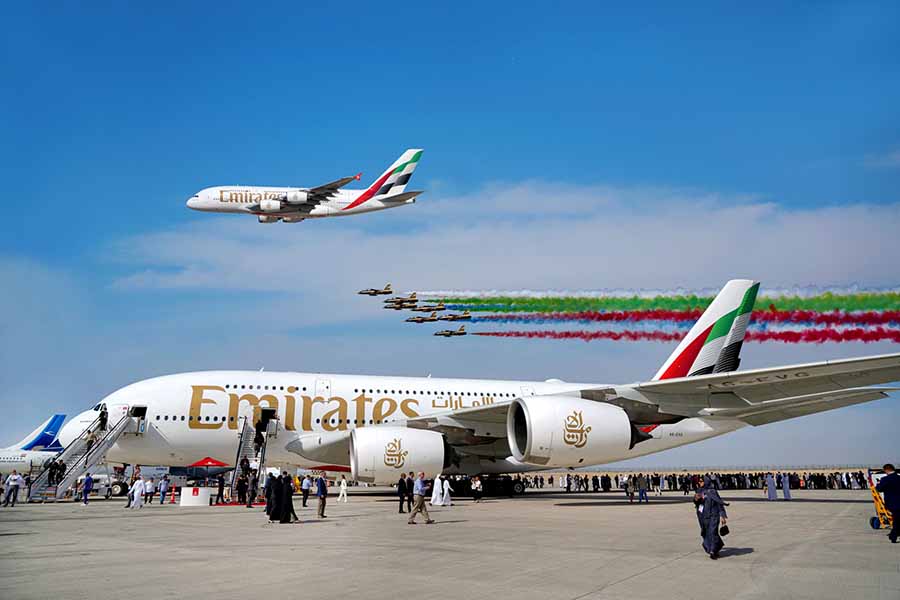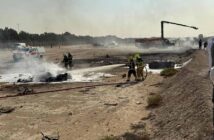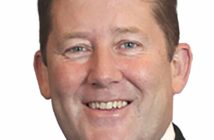
Day three of the Dubai Airshow was marred by tragedy when a HAL Tejas fighter jet from the Indian Air Force crashed,resulting in the death of the pilot, Wing Commander Namansh Syal, and the cancellation of the event’s final day.
Tthe Aerospace 2050 stage hosted students in panels and roundtables with industry representatives on the final day.
The event featured over 1,500 exhibitors, more than 200 aircraft in static and flying displays, and 450 speakers across four stages and 12 tracks throughout the week. Organisers reported attendance exceeded 150,000 visitors, with the show open to trade delegates on days one to four and to the public on day five.
On the last day, the flying display included performances by the Indian Surya Kiran aerobatic team and the LCA Tejas MK1 aircraft, which completed its scheduled slots without incident. The Pakistan JF-17 Thunder remained grounded due to a persistent hydraulic leak that prevented its inclusion in the flying programme from day one through to the end. Italy showcased its aerospace contributions through displays of aircraft technology and AI-driven systems in the national pavilion.
The conference programme on day five focused on sustainability and innovation, with sessions on green fuels, airport technology, and workforce development. The Space Pavilion, in partnership with the UAE Space Agency, concluded its five-day agenda with discussions on commercialisation of space technologies, featuring inputs from agencies including NASA and the UK Space Agency.
Emirates demonstrated Starlink WiFi installations on select Boeing 777 aircraft during the show, with rollout across the fleet set to commence in December 2025. Flydubai finalised leases for additional Boeing 737 aircraft from Dubai Aerospace Enterprise to support fleet expansion.
The event incorporated 21 national pavilions and 120 startups, where 50 investors engaged in matchmaking sessions. Dubai Airports presented updates on waste reduction initiatives and energy systems, noting that the aviation sector accounts for two per cent of global CO2 emissions, with fuel efficiency improvements of 1.5 per cent annually since 2005.
Sheikh Mohammed bin Rashid Al Maktoum visited the site on day four to review exhibits in aviation, aerospace, air mobility, and defence sectors. The airshow supported research and development in civil and military aviation, facilitated international partnerships, and positioned Dubai as a hub for aviation technologies.
The Skyview platform accommodated families for aerial views of the displays, hosting 15,000 visitors over the five days. Airshow After Dark extended operations on Tuesday until 21:00, featuring drone shows, skydiving, and live music.
As the show closed prematurely, marred by tragedy, organisers announced that the event generated orders valued at over €100bn across commercial, defence, and space segments.





